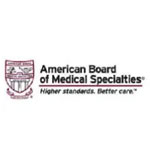Rhinoplasty Irvine

The nose is a prominent feature of the face and because it is central to facial anatomy, it may either contribute or negatively affect facial harmony and balance. A nose that is disproportionate to other major facial features may greatly influence an individual’s self-image and confidence. A slight alteration to the nose can significantly improve an individual’s appearance as the nose is a defining characteristic feature of the face. Rhinoplasty procedure can be performed to change size, shape and angle of the nose as well as straighten a crocked nose for cosmetic reasons. The procedure can also be done to improve breathing.
What is a Rhinoplasty Procedure?
A Rhinoplasty or “nose surgery” refers to a procedure that is designed to reshape and refine a nose that is too large, too wide, or has a nasal tip that needs reshaping for results that are both functional and aesthetically-pleasing. With close attention to detail and an outstanding sense of aesthetics, “Dr. K” Plastic Surgeon in Orange County performs Rhinoplasty procedures to suit the specific needs of each individual patient. Because no two noses are alike, an individualized approach is implemented in all aspects of nasal surgery to ensure the procedure is designed to suit specific needs of the patient
Plastic Surgery can make you look younger
Breast Augmentations, Mommy Makeovers & Brazilian Butt Lifts
and other procedures in Orange County
SCHEDULE A CONSULTATION
Nose job Irvine, California
What do you need to do before the surgery?
Avoid any medications that “thins the blood” such as aspirin, anti-inflammatory (e.g. ibuprofen containing meds), herbal medication about 10 days before the surgery. You need to stop smoking well before and after the date of surgery. Your surgeon will ask you to take certain medications or current medications. Pre-op labs and testing will be ordered within 7 days before your surgery. You will need to have a ride to and from the surgery center. Stop eating or drinking after 10Pm the night before the surgery.

What are some of the potential risk with nose surgery?
Bleeding or hematoma. Infection (antibiotics are given to minimize the risk). Permanent loss of sensation (temporary loss of sensation returns with time). Skin problems that can range from discoloration, irritation to loss of a segment of skin. Bony irregularity or contour deformity. Perforation (development of a hole) of the septum (structure inside the nose that separates the nostrils), depending on the size, it may need another surgery. Risk of anesthesia and cardiac (heart) or pulmonary (lung) complications. Blockage of the nasal passage. Every attempt is made to minimize the risk of complications and each individual is evaluated to determine whether the risk of the procedure out weighs the benefits.
What Techniques is Used During Rhinoplasty Surgery?
Dr Kalantarian prefers to perform all of his rhinoplasty procedures under general anesthesia using a board certified anesthesiologist. The procedure can be done either “closed” (endonasally) or with an open approach depending the patient and surgeons desire and the detail of work that needs to be done. In the endonasal or closed approach, the incisions are made inside the nose and are hidden. In the open approach, in addition to the hidden incisions inside the nose, there is an incision along the mid portion of the columella (the strip of tissue and skin that separates the nostrils). The nasal “hump” or dorsal hump is usually excess nasal bone and cartilage on the back or dorsum of the nose. The bony portion is usually rasped off and the cartilaginous segment is shaved. Depending of the size of the nasal “hump” an osteotomy (breaking the and repositioning the bone) and/or reconstruction of the nasal valve may be required to prevent what is called an open roof deformity. To reduce the side wall bony structure of the nose, Dr. Kalantarian may need to perform an osteotomy (breaking the nose and repositioning them in a more desired location) using precision depending on your nose type and desired outcome. The bones will heal in a more narrow and refined shape. To reduce the size of the tip of the nose, a procedure called tiplasty is implemented. Dr. Kalantarian prefers an open rhinoplasty. The tip can be refined by variety of different suturing techniques as well as excision of a portion of excess cartilage. A tip cartilage graft may have to be fashioned depending on the individual case. . In cases where the septum (structure inside the nose that separates the nostrils) is deviated a septoplasty will be required. A septoplasty is a procedure that removes a segment of the septum and repositions the septum in midline of the nose. Septal cartilage is the prefered cartilage to harvest if cartilage is needed to shape the internal structure of the nose or reconstruction of the internal nose is required to improve breathing. Your nose will then be taped and may be lightly held together by splints or a cast.
Dr. Kalantarian’s goal for his Los Angeles and Orange County Rhinoplasty patients is to achieve a natural-looking result that fits the patient’s face with an enhanced overall facial harmony and profile. There are different types of Rhinoplasty techniques that may be used to yield desired results. Dr. Kalantarian has the experience and training to perform a Rhinoplasty technique to best suit a patient’s needs.
If you would like to learn more, please schedule a free consultation by calling our office in OC at (714) 444-4495 or fill the online Consult form.











